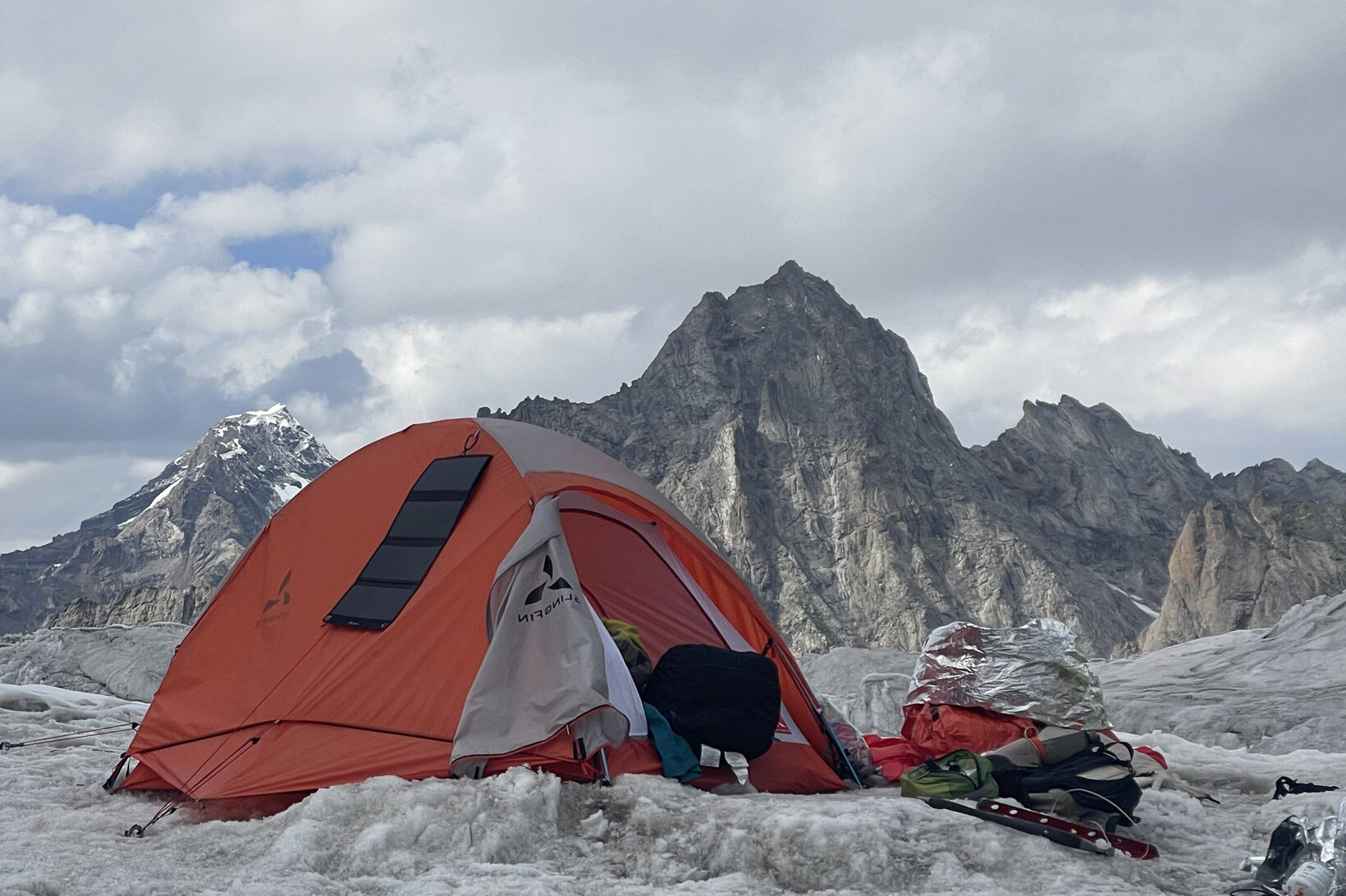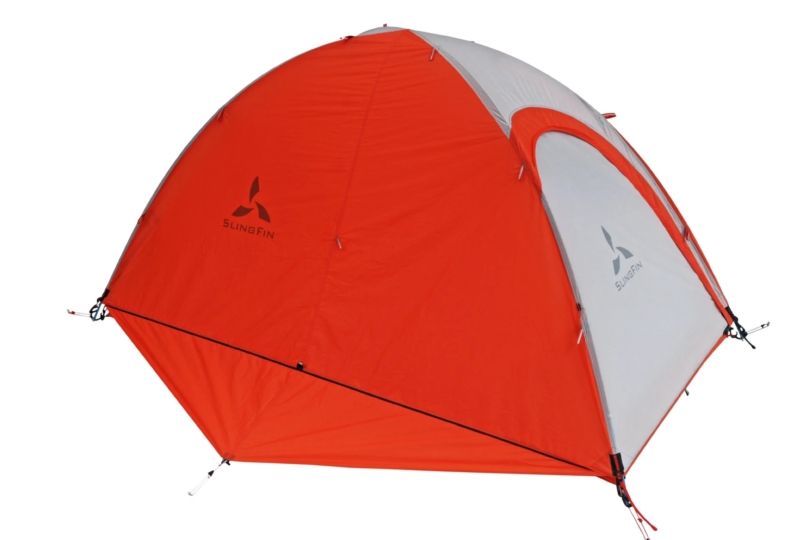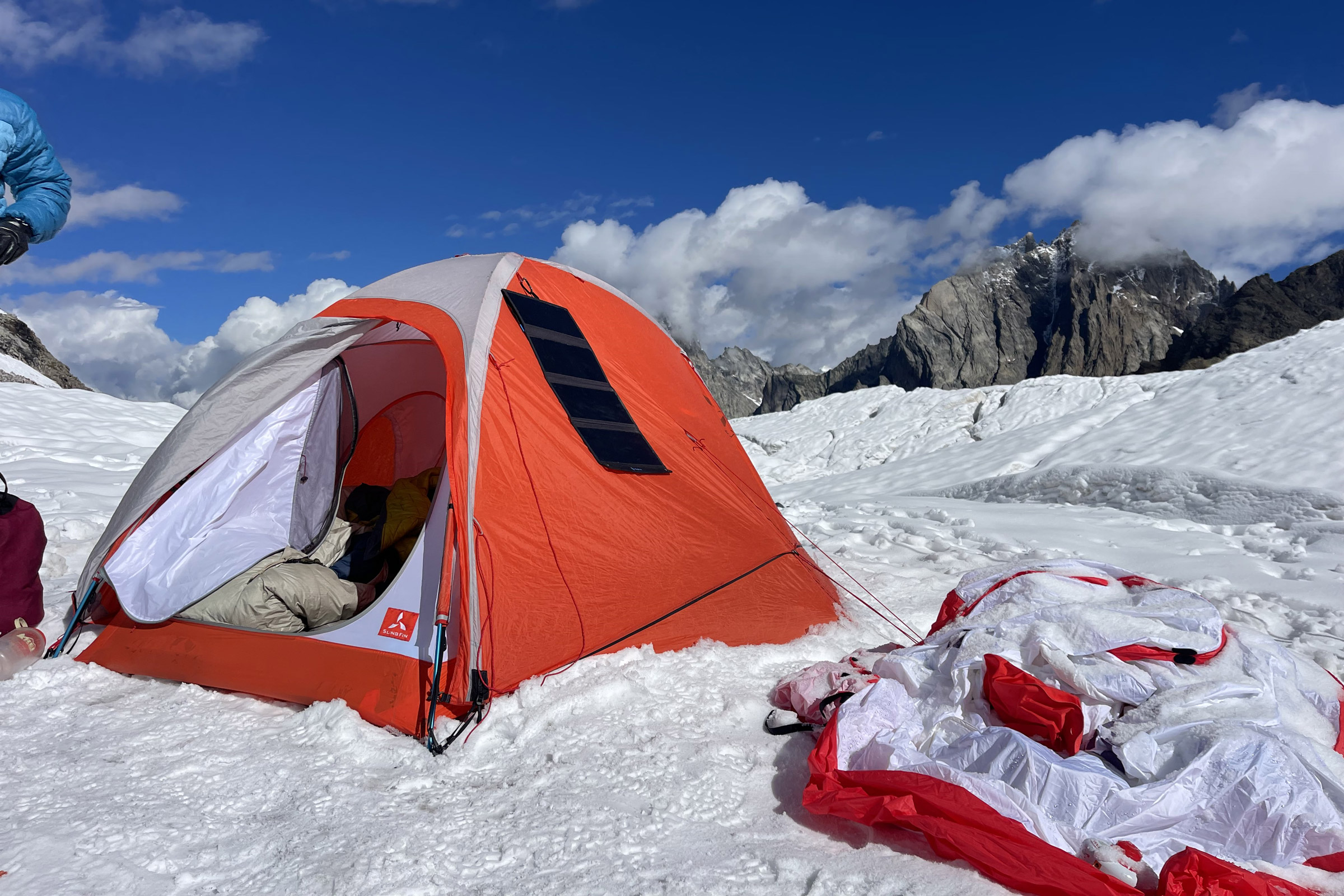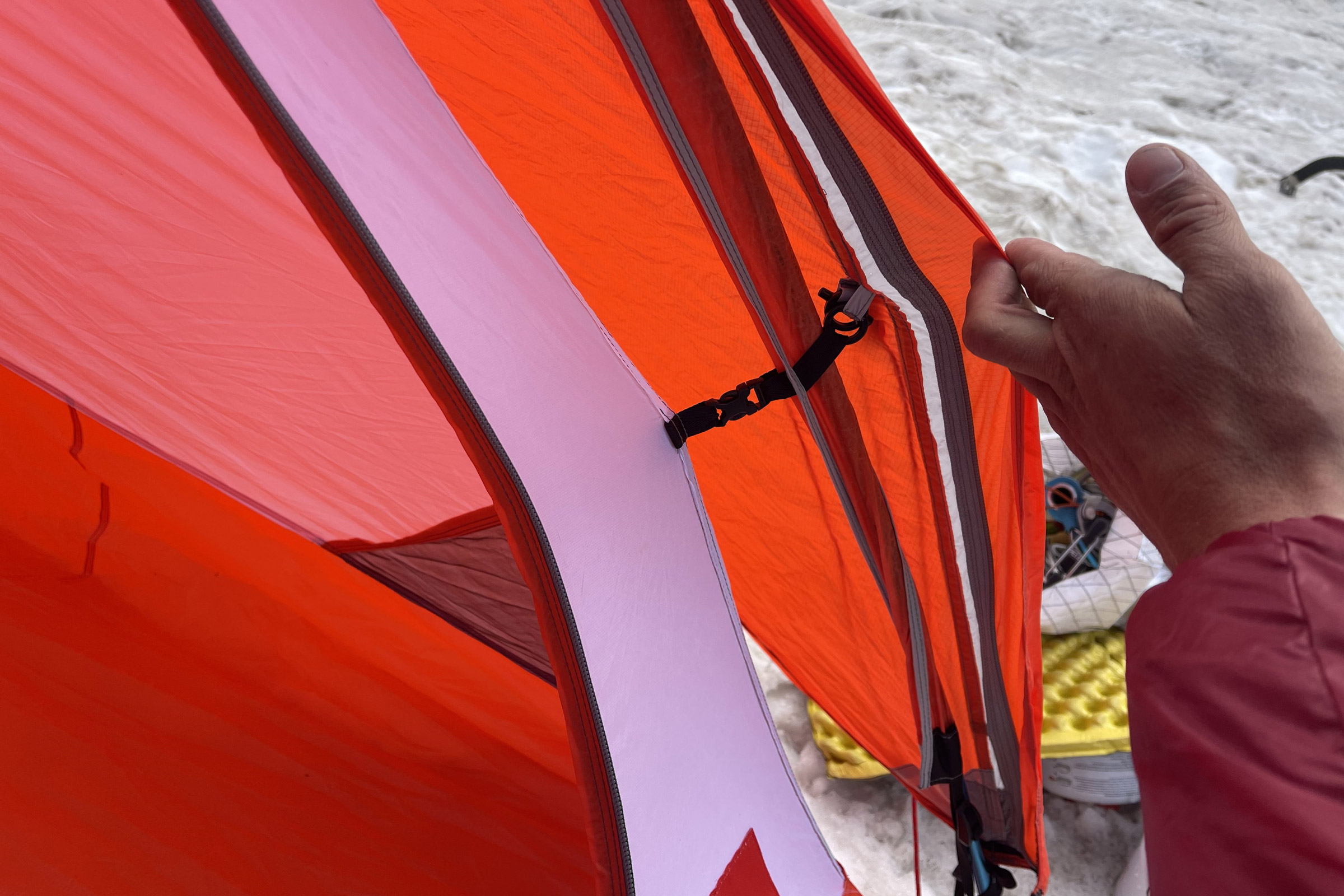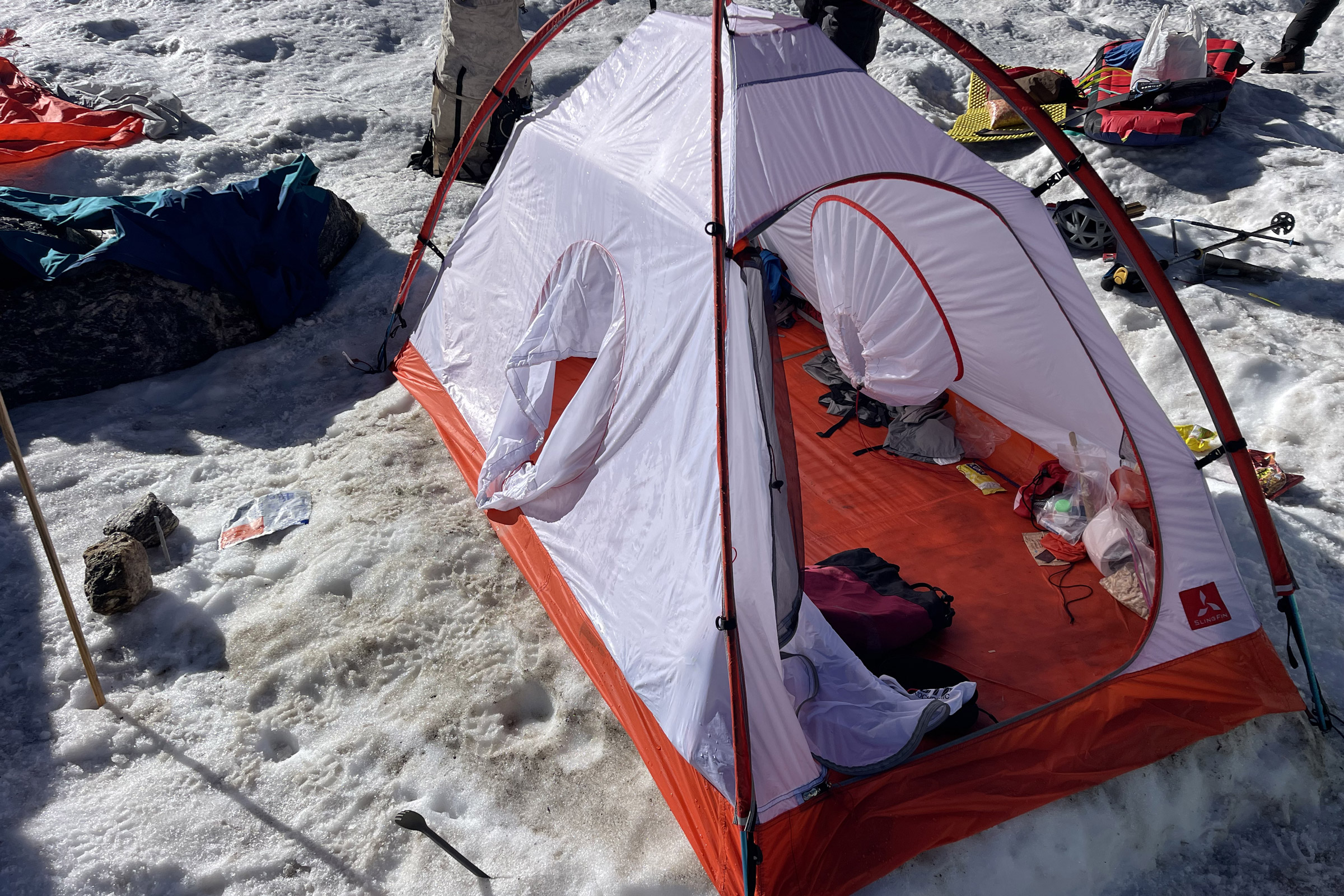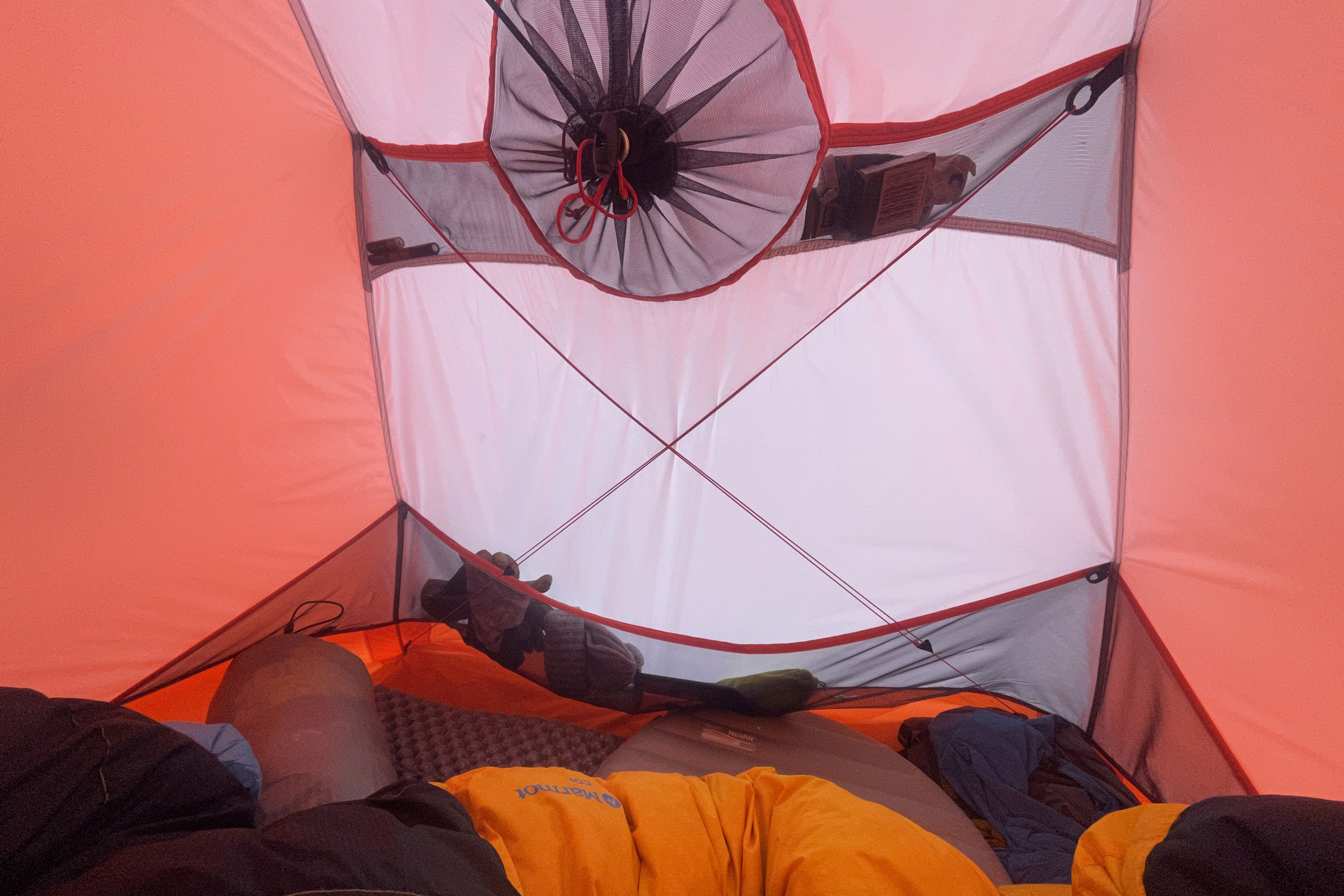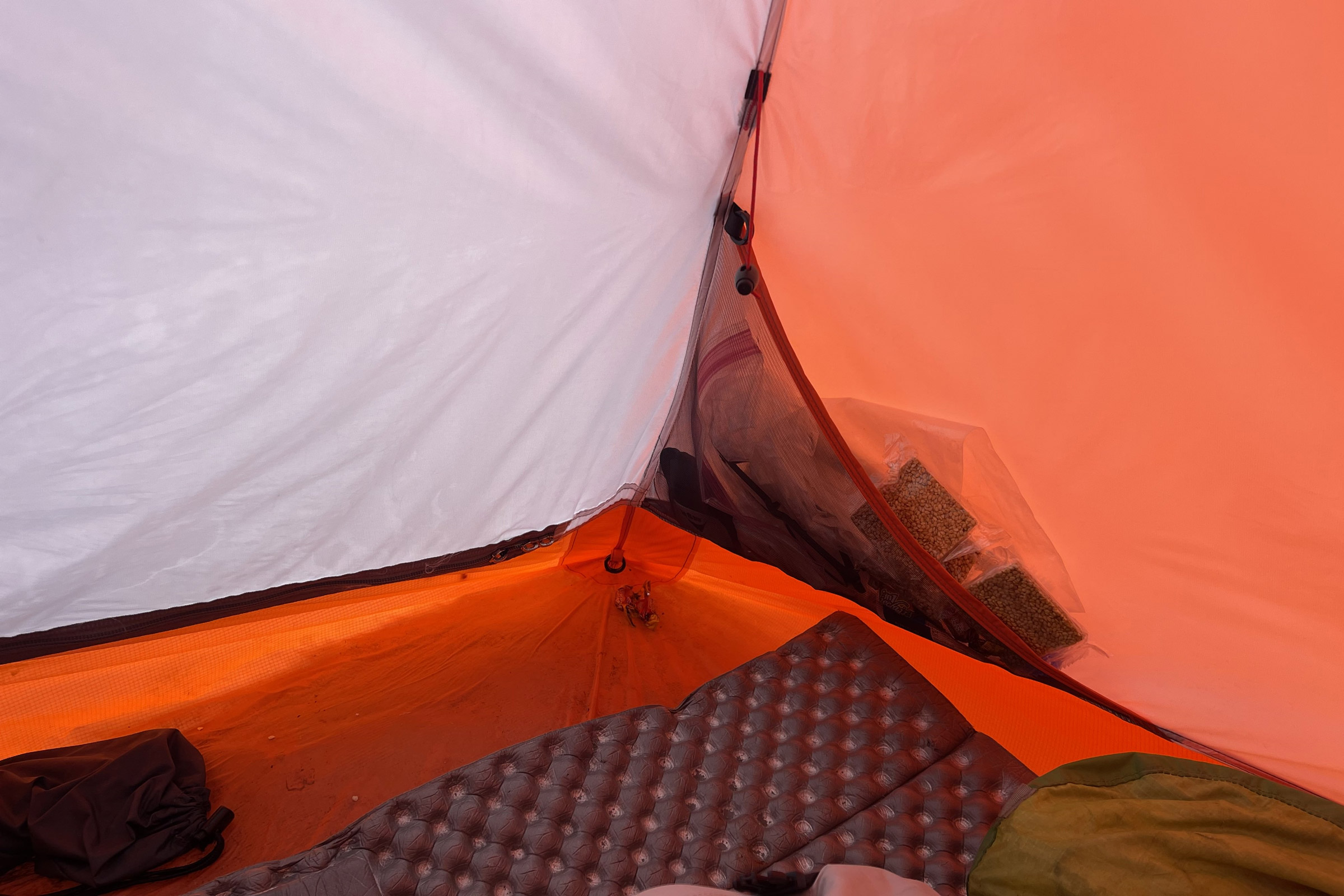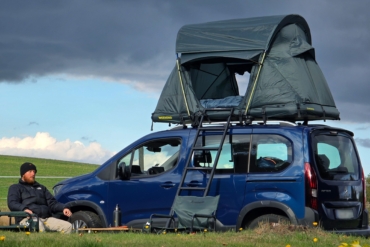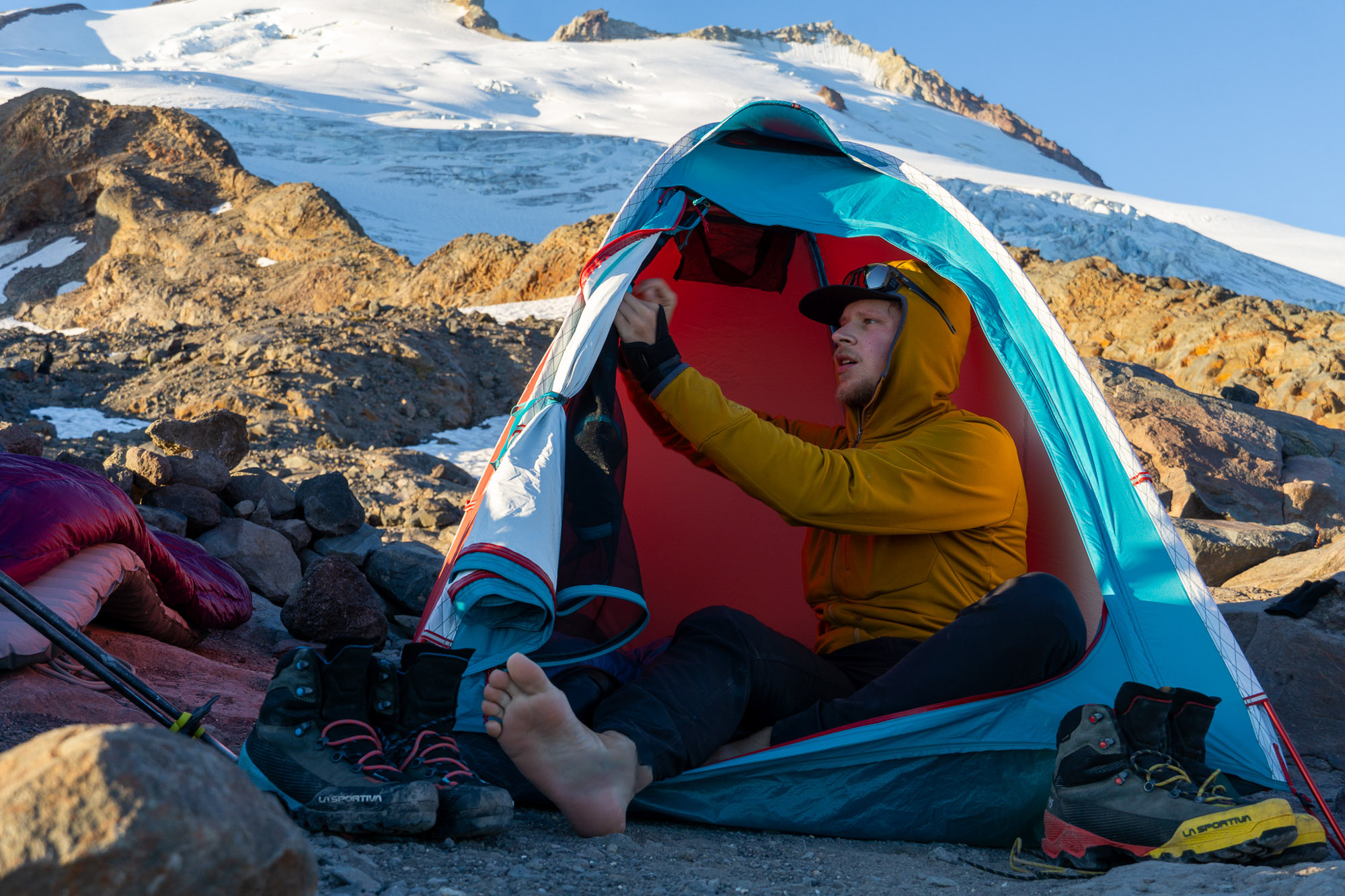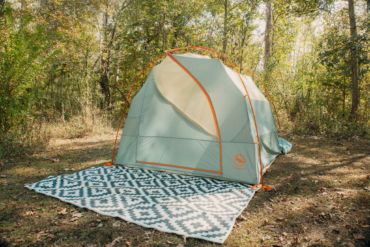We continued persisting in the only ways we knew: reading, eating chocolate butter, and dreaming about when the rain would stop so we could finish establishing our advanced basecamp higher up on the glacier.
We were deep in the Kishtwar Valley of the Indian Himalayas to climb a new technical route on a 6,000m peak near the end of the valley. Of the over 400 pounds of gear we brought, the SlingFin HotBox was a cornerstone for making our month-long trip as pleasant as possible.
At the end of our climb, my only thought when packing the HotBox away for the final time was, “Finally, someone made a bivy tent that doesn’t suck!”
In short: The SlingFin HotBox is a complete redesign of the classically unchanged freestanding bivy tents currently on the market. Maintaining a small footprint while increasing functionality, the HotBox has a double-wall design to combat condensation, a plethora of internal pockets for organization, and a novel gear storage system that saves space in the interior. SlingFin finally achieved what no other company has at a competitive weight — a functional and liveable bivy tent!
-
Weather Resistance
7.0
-
Living Space
7.0
-
Durability
8.0
-
Size & Weight
9.0
- Type: High-altitude mountaineering
- Weight: 4 lbs., 2 oz.
- Doors: 1
- Sleeps: 2
- Floor Area: 26.8 sq. ft.
- Vestibule Area: 11 sq. ft. in side gear storage areas
- Height: 41"
- Walls: Double
Pros
- Bivy-style tent footprint with a full double-wall build
- Impressive resistance to condensation
- Side vestibules accessible through internal vents
- Internal guylines work with external WebTruss pole system for strong support
Cons
- Weight penalty compared to single-skin bivy tents
- Fly design requires smart set-up to avoid going broadside to the wind
Slingfin HotBox Main Features
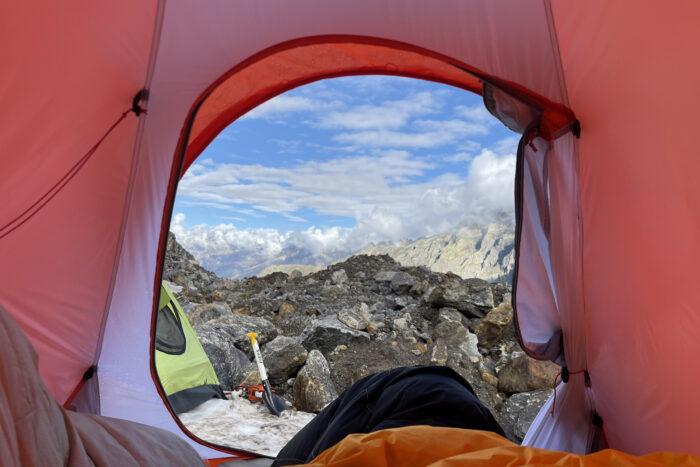
It’s clear when SlingFin designed the Hotbox, they started from the ground up. Traditional bivy tents for alpine climbing are almost always the same — a simple freestanding cross-pole design, a front door with no vestibule, and a single-wall design that is always synonymous with condensation issues. Oh, and they generally suck to live in and have minimal-to-no pockets for organization inside.
On the other hand, the HotBox maintains the key features of previous bivy tents while dramatically improving upon the rest. Let’s start with the critical design elements of bivy tents that it retains.
Freestanding Cross-Pole Design
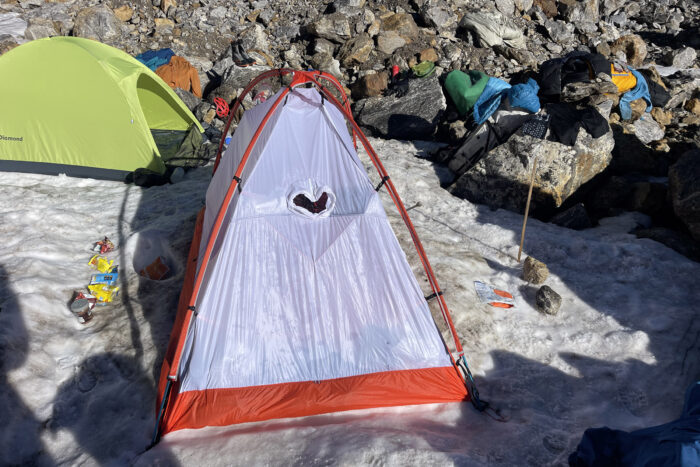
This proven tent pole orientation offers the most resistance to high winds while being incredibly simple to set up. While some bivy tents have poles interior or exterior to the single-wall structure, the HotBox uses a WebTruss sleeve system that sits between the double walls.
It clips to the main tent body and the fly. The poles lock into opposing corners of the tent for a classic freestanding design with a small footprint. This is essential for alpine climbing tents that often must be pitched on steep slopes or small ledges.
Front Entry
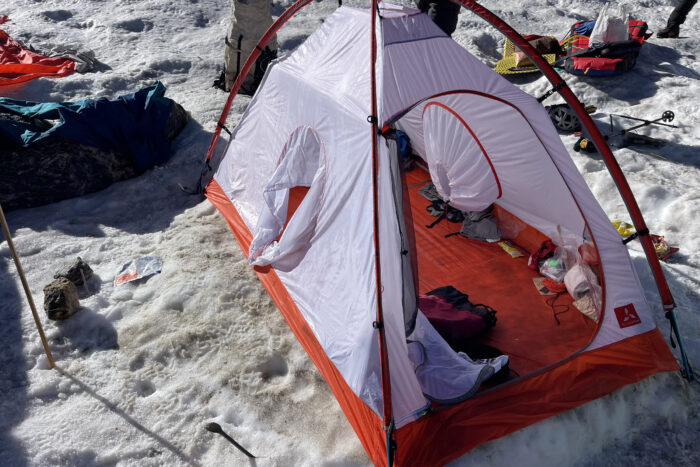
Like other bivy tents, the HotBox retains the single-door front entry system, often the best design for entering the tent when pitched in precarious locations. This common design can be a nuisance due to the lack of a vestibule. However, SlingFin remedied the vestibule problem in other ways.
Unique SlingFin HotBox Designs
As mentioned earlier, the SlingFin HotBox has several features not seen in any other bivy tent designs. In my experience, each dramatically improved usability and livability. The largest of these is the ultralight double-wall design of the tent.
Double-Wall Design
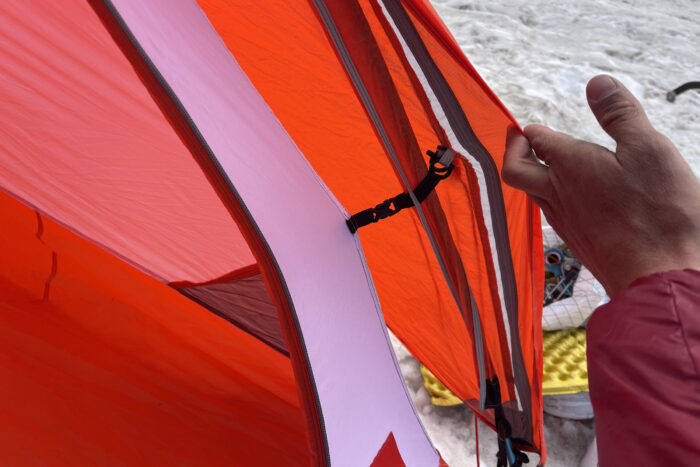
If you have used single-wall bivy tents before, you know the nuisance of the design. Condensation builds up on the interior of the tent walls due to the temperature difference between the sides of the fabric. You wake up to dew-covered walls, a damp tent floor, or sheets of frozen frost that inevitably melt inside the tent. While tolerable for a night or two, it’s troublesome for longer trips and often results in damp clothes and sleeping bags. As you can imagine, this can be a huge liability.
With the return to a double-wall design, the HotBox solves the condensation issue with minimal weight penalty. With over 15 nights spent in the tent above 14,000 feet, we waited out multiple 48-hour stints of snow and rain at our high camps on the glacier. The tent’s lack of condensation was super impressive.
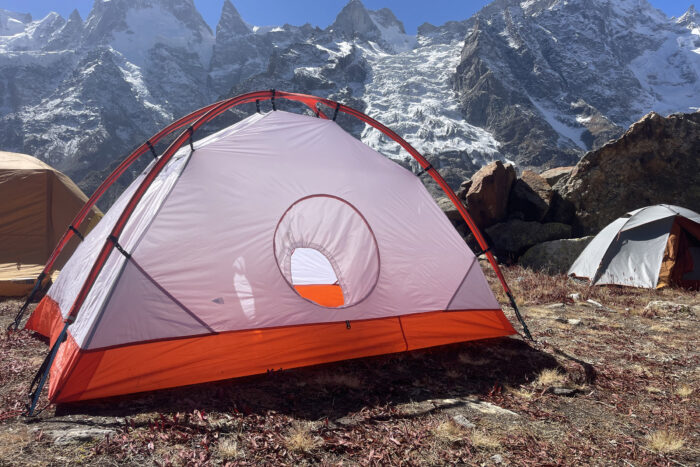
After one 48-hour rain storm, my partner’s single-wall tent had turned into a kiddie pool. He picked up the tent to dump out pooled water and squeezed out wet clothes on the floor. The SlingFin Hotbox, on the other hand, remained well-ventilated and almost entirely free of condensation. Only on a few of the coldest nights when I closed all vents did I have small amounts of condensation on the inner walls — a huge win for the HotBox!
Side Vestibules
The other significant improvement in the HotBox design is the novel side vestibules for gear storage. Two large drawstring port holes on the inner tent give each person access to a side vestibule formed by the outer fly.
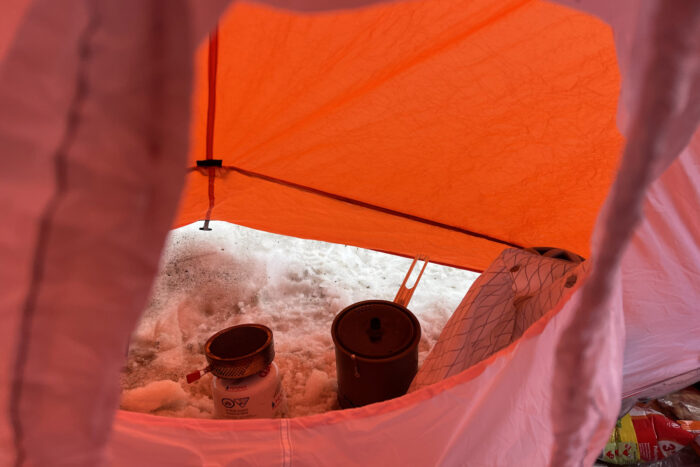
This area was spacious enough to stash empty packs, mountain boots, helmets, stove, and other items not needed inside the tent. The tent’s interior felt much more spacious while keeping all our gear accessible and close at hand. It was a minor nuisance to take boots off at the front of the tent and pass them through the interior and port holes, but the improved living space was well worth it.
The side vestibules on the HotBox can be used in two ways. If space or staking is an issue, the bottom of the vestibule flap can be clipped back to the tent body. This creates a loose pocket to stash gear that sits protected from the elements.
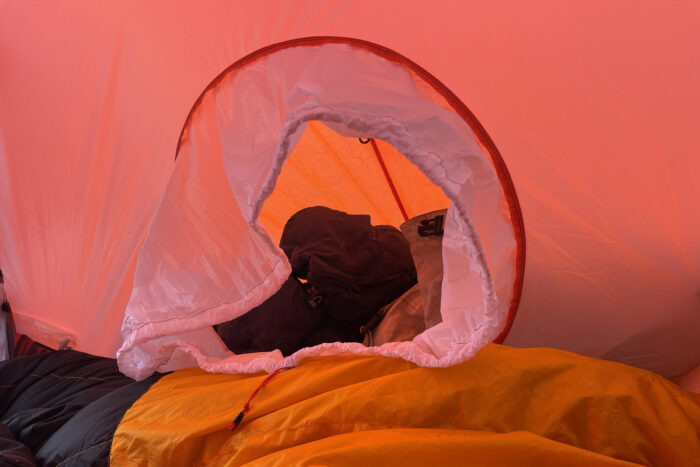
Because we always had ample space on the glacier, we opted to stake out the side vestibule to create a spacious room to stash our gear. While plenty protected, one caution we took away was to bring our boots inside the tent during windy storms. The snow would inevitably drift up into the side vestibule and coat our belongings. This was a minor nuisance, and if I had buried the snow flaps, it would likely not been an issue.
Plentiful Interior Pockets
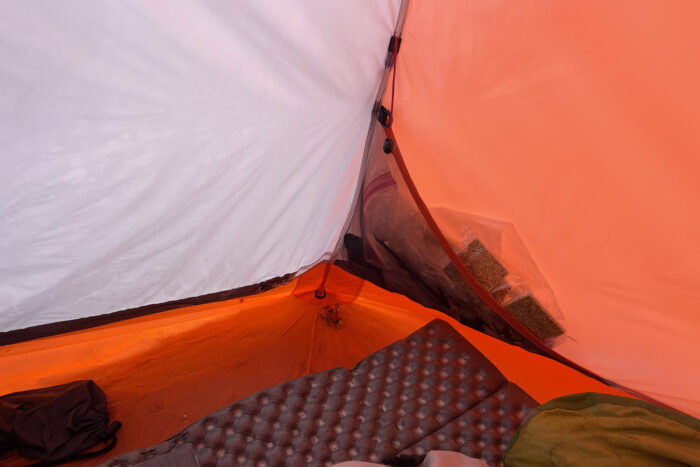
The final major issue the SlingFin HotBox improves upon is internal organization. While contenders like the Black Diamond Firstlight host zero interior pockets, the HotBox integrates eight internal pockets that dramatically improved the tent’s livability.
My climbing partner and I never struggled for space as we existed in the tent for weeks. We used the four corner pockets for odds and ends, the large back pocket for electronics and extra layers, and the two ceiling pockets for fragile items like sunglasses.
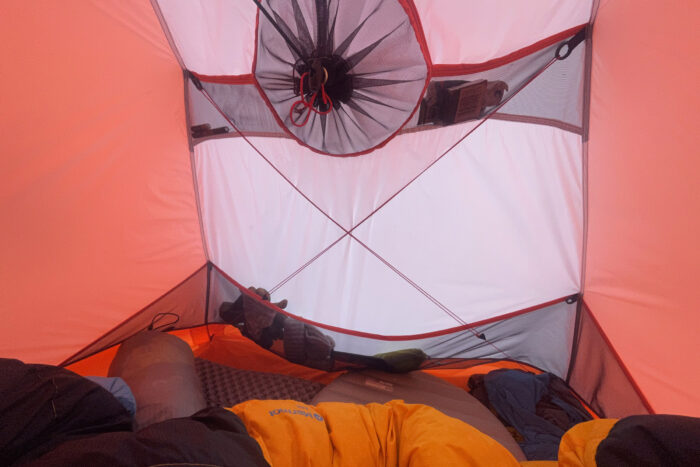
Add to that the eight internal ceiling O-rings for hanging interior lines, and we rarely lost extraneous items on the tent’s floor. I want plentiful pockets in all tents, especially smaller ones that might be the only livable shelter for days on end.
Additional SlingFin HotBox Features
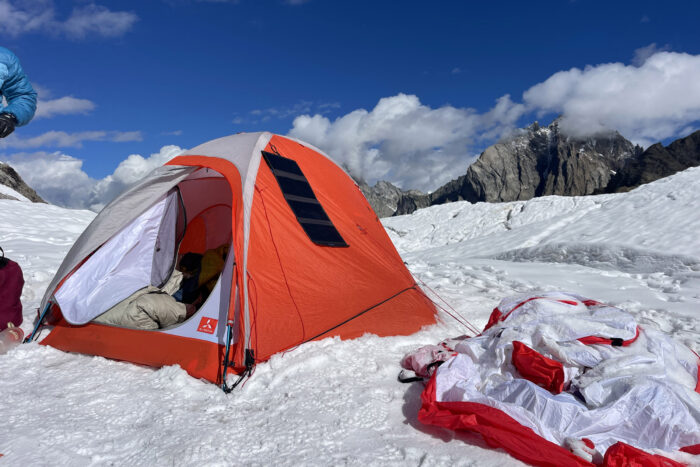
A few other features incorporated in the SlingFin HotBox are worth honorable mentions. The inner door hosts a small mesh zipper opening to help with cross-ventilation, along with an opposing small ventilation port near the back. The rear ventilation port can be fully opened to allow for an anchor tether to be threaded into the tent if sleeping while harnessed in.
For added wind resistance in extreme conditions, there are 14 exterior guy-out points and a set of preinstalled interior tensioning guylines to give added stability to the poles. There are also preinstalled replacement double zippers on all zippers to maintain functionality in case of a failure in the field. All are welcome features that improve overall usability.
Weight
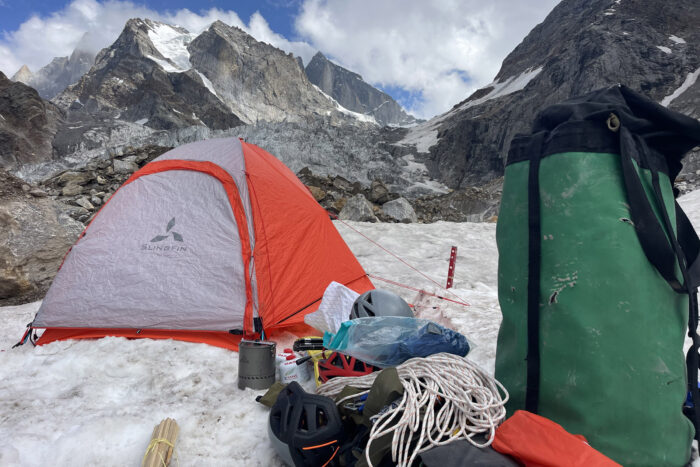
Indeed, one of the most essential aspects of a bivy tent is weight. The lightest bivy tents on the market, such as the MSR Advance Pro 2 and Black Diamond Firstlight, weigh in at around 2 pounds, 14 ounces each, while the minimum pitch weight of the Hotbox is 3 pounds, 7.2 ounces. That difference clocks in at only 250 g, about half a pound or the weight of a few protein bars.
Half a pound is undoubtedly a measurable difference, but for the dramatically improved living experience, it was worth it, in my opinion. Only on the very lightest of technical ascents would I consider this difference before choosing a different tent.
Value
Bivy tents come in many price ranges, with the Black Diamond Firstlight being the “cheapest” at around $500, the MSR Advance Pro 2 at $800. Newer Dyneema constructed ultralight bivy tents like the Samaya Assaut2 come in at over $1,700. The HotBox sits at the lower end of this price range at $650, quite a deal considering its usability both in and out of the high alpine!
Uses
The HotBox is certainly a specialist tent, but I think it is the most livable bivy tent on the market. The HotBox excels on long trips and expeditions with various weather conditions, such as rain lower on the glacier and snow higher up. A double wall design to remedy condensation and usable interior and exterior storage made it a comfortable living experience despite being a small-footprint bivy tent.
SlingFin HotBox Tent: Conclusion
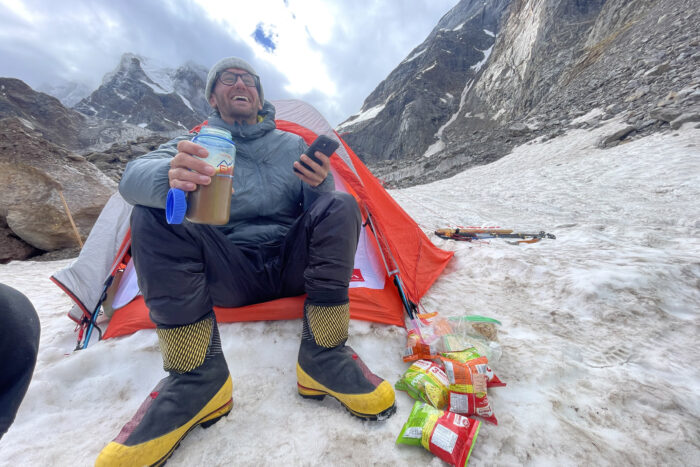
At only a half-pound weight penalty for all of the added usability, I think the SlingFin HotBox is the bivy tent to choose for all but the most weight-conscious ascents. I sold my previous bivy tent because I was so happy with the HotBox — the added usable storage, ventilation and lack of condensation culminated in an unforgettable and positive experience. The tent just works.
